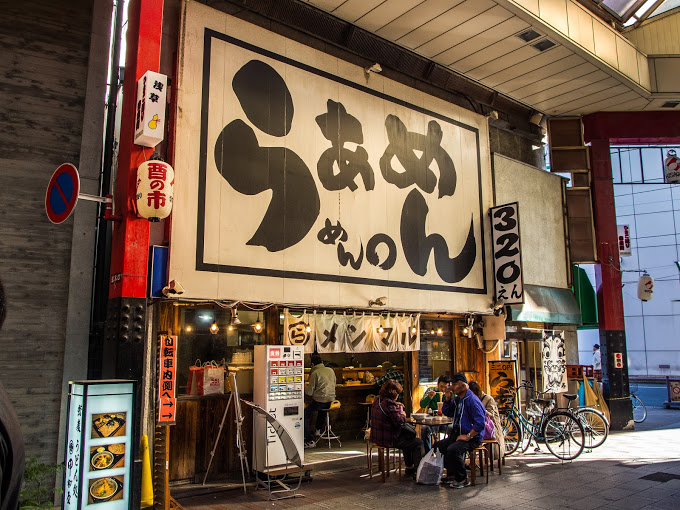It may be the global capital of modern cool these days, but even back in the Edo period, Tokyo was home to some of the most fascinating culture in the world. Forget samurai and their stylized and ritualistic life you see in those period films: the merchants and craftsmen of 16-18th century Edo partied like crazy and spent every penny they made during the day in ways that most modern-day Japanese people wouldn’t even dream of.
What remains of those times can be found in the eastern parts of Tokyo, the areas collectively called “shitamachi” or “low city” (some call it “downtown” which isn’t exactly correct; the people of that time were quite literal in that the area was indeed lower than the hilly western part where the shogun and his samurai used to live).

Today, Tokyo’s shitamachi means pretty much everything from Nihonbashi eastwards, and for many the capital of shitamachi is Asakusa. Old-timers and historians may take issue with this definition, but let’s put that aside for now. Considered by most to be a tourist trap, Asakusa is one of the things that “you have to do” in Tokyo before moving on to the “really cool” stuff. But, like similar areas all over the world, it remains a real neighborhood with real people. It just happens to be home to some very touristy spots too, namely Sensoji Temple and Sky Tree, the 2,080 ft. high observation and broadcasting tower. This is really unfair to Asakusa since a) Sky Tree is not even there but in Oshiage, on the other side of the Sumida River; and (b) there’s lots of other stuff available. More importantly, most of that stuff is either free or very reasonably priced, so wandering around the area is a great cheapo way to catch a glimpse of old-time Tokyo.

You’ll probably come to Asakusa by the Asakusa or the Ginza subway line—there’s an “Asakusa” station on both—and you’ll probably go first to Sensoji, passing one of Tokyo’s landmarks, the Kaminarimon Gate featuring a huge red paper lantern. From there on you’ll follow the crowds going up Nakamise Dori street lined with shops selling any souvenir imaginable as well as some of the tastier candy and o-senbei rice crackers in Tokyo. You’ll then pass the second big gate (“Hozomon”) next to the five-storied pagoda and reach Sensoji proper; most people stop there, at the big incense burner, but I’d suggest you climb the stairs and go into the actual temple. The main altar is in plain view so you can watch one of several masses held there every day; don’t mind the chicken-wire—it’s there to protect the priests from the hundreds of coins thrown in at any given moment. Note that if you’re into temple/shrine-hopping, there are about 30 or so in the area with about a dozen of them conveniently located within a 15-minute walk from Sensoji.

Well, the visit to Sensoji takes care of the mandatory sightseeing, so what next? In Asakusa, hardly a month goes by without at least one public (i.e. open/free) event. From the May Sanja Matsuri, arguably Tokyo’s biggest street festival with hundreds of portable shrines being carried in the streets by thousands of loud (and invariably drunk) participants, to the August Samba Parade, the biggest of its kind outside Rio featuring Brazilian samba dancers who live in Tokyo, or the end-of-the-year markets for good luck charms like kumade (ornamental rakes) and hagoita (shuttlecock paddles decorated with scenes from Kabuki) it’s certain that you’ll find something exciting, usually with 2-3 centuries’ worth of history/tradition attached. And around all these events are street food stalls offering some of the deepest Japanese soul food – stuff like baked and buttered potatoes, Hiroshima-yaki (like okonomiyaki but better) or ramen burgers next to the usual yakisoba and those weird chocolate-covered bananas.

Less known places worth visiting are the Edo-Shitamachi Traditional Crafts Hall in Hisago Dori with a permanent collection of exquisite handicrafts (they also regularly open their main room to craftsmen who make their stuff right there in front of you), various workshops offering hands-on trials of traditional arts like woodcarving or ukiyo-e woodblock printing, the somewhat grandiosely named Rokku Broadway, pre-war Tokyo’s main entertainment district which today is a stage for some of the best street performers (jugglers, acrobats or musicians like the “Tokyo Taishu Kayo Gakudan” trio playing music from the 20s and 30s) in town, the area behind Sensoji called “Oku Asakusa” or “Kannon Ura”, one of the few spots in Tokyo where you can see real geisha going to their evening engagements (their “agency” or “Asakusa Kenban” is there) or performing open tea ceremonies and offering tea to passersby, and Asakusa’s main Shinto shrine, Asakusa Jinja right next to Sensoji, always a favorite for classic weddings with the newlyweds and their families leaving in jinrikisha (rickshaws).

If you get tired and need to refuel, try the “Ramen Maru” at Hisago Dori (the basic ramen is 320 yen), the “Zenpin 300 yen-ya” in Sushiya Dori where all plates are 320 yen, the “Delika Pakupaku” o-bento store in Rokku Hanamichi, next to exit A1 of Tsukuba Express’ Asakusa station, with many different bento boxes all at 250 yen and single items like menchi-katsu (fried meat “cakes”) starting at 50 yen, or either of the two “My Basket” supermarkets (one is in a Kaminarimon Dori backstreet close to Sushiya Dori and one is at the crossroads of Edo Dori and Namiki Dori facing the Komagata Bridge), where between 11:00 and 12:00 AM much of the pre-cooked stuff goes down 33%, meaning you can grab a couple of chicken or croquette sandwiches for about 70 yen each. Oh and for dessert, try the karinto manju (deep-fried crunchy buns with sweet bean paste filling) from “Yasai no Oyaki” in Tanuki Dori – it’s the tastiest investment of 80 yen in Tokyo!


























